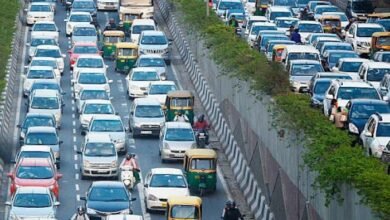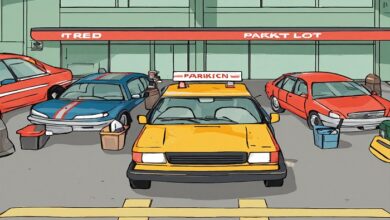Parivahan Sewa Delhi: Revolutionizing Urban Mobility

Introduction
Parivahan Sewa Delhi is a significant initiative aimed at improving the public transportation system in Delhi. By providing efficient, reliable, and affordable transportation options, Parivahan Sewa Delhi aims to reduce traffic congestion, air pollution, and travel time for commuters. This blog post will delve into the various aspects of Parivahan Sewa Delhi, including its objectives, services, benefits, and future prospects.
The Vision Behind Parivahan Sewa Delhi
The vision of Parivahan Sewa Delhi is to create a world-class public transportation system that is accessible, affordable, and sustainable. By integrating various modes of transport, such as buses, metro trains, and shared mobility services, Parivahan Sewa Delhi strives to provide seamless connectivity across the city.
A Multi-Modal Approach to Urban Mobility
Parivahan Sewa Delhi embraces a multi-modal approach to urban mobility, recognizing the importance of integrating different modes of transport. By combining bus services, metro rail, and shared mobility options, the system aims to offer commuters a wide range of choices to suit their specific needs.
Enhancing Bus Services: The Backbone of Parivahan Sewa Delhi
Bus services form the backbone of Parivahan Sewa Delhi. The government has undertaken several initiatives to improve the quality and efficiency of bus services, including:
- Modernization of Bus Fleet: Introducing new, low-floor buses with advanced features like air-conditioning, GPS tracking, and passenger information systems.
- Expansion of Bus Routes: Extending bus routes to cover a wider area and improve connectivity to residential and commercial areas.
- Real-Time Bus Tracking: Implementing real-time bus tracking systems to provide accurate information to commuters about bus arrival times and locations.
- Dedicated Bus Lanes: Creating dedicated bus lanes to reduce travel time and improve the reliability of bus services.
Delhi Metro: A Lifeline for Commuters
The Delhi Metro is a vital component of Parivahan Sewa Delhi, providing fast and efficient connectivity across the city. The metro network has been continuously expanding, with new lines and stations being added to cater to the growing needs of commuters.
Promoting Shared Mobility: Carpooling and Bike-Sharing
Parivahan Sewa Delhi encourages shared mobility options like carpooling and bike-sharing to reduce the number of private vehicles on the roads. By promoting carpooling, the government aims to reduce traffic congestion and air pollution. Bike-sharing programs provide an eco-friendly and convenient way for commuters to travel short distances.
Improving Pedestrian Infrastructure
Parivahan Sewa Delhi recognizes the importance of pedestrian infrastructure in creating a safe and accessible city. The government is investing in the development of footpaths, zebra crossings, and pedestrian bridges to make it easier for people to walk and cycle.
Addressing Traffic Congestion: Intelligent Traffic Management Systems
To address the issue of traffic congestion, Parivahan Sewa Delhi is implementing intelligent traffic management systems. These systems use advanced technologies to monitor traffic flow, optimize signal timings, and identify bottlenecks.
Ensuring Safety and Security
The safety and security of commuters is a top priority for Parivahan Sewa Delhi. The government has taken several measures to enhance security, including:
- CCTV Surveillance: Installing CCTV cameras at bus stops, metro stations, and other public places.
- Emergency Response Teams: Deploying emergency response teams to handle any incidents or emergencies.
- Passenger Awareness Campaigns: Conducting awareness campaigns to educate commuters about safety measures and emergency procedures.
Encouraging Public Transport Usage: Subsidies and Incentives
To encourage people to shift from private vehicles to public transport, Parivahan Sewa Delhi offers various subsidies and incentives. These include:
- Reduced Fares: Providing discounted fares for students, senior citizens, and low-income groups.
- Free Wi-Fi: Offering free Wi-Fi services at bus stops and metro stations.
- Clean and Hygienic Facilities: Maintaining clean and hygienic facilities at bus stops, metro stations, and bus depots.
Addressing Challenges and Future Outlook
Despite significant progress, Parivahan Sewa Delhi still faces several challenges, such as inadequate infrastructure, traffic congestion, and lack of public awareness. To address these challenges, the government needs to continue investing in infrastructure development, improving public awareness, and enforcing traffic rules strictly.
International Best Practices and Lessons Learned
Parivahan Sewa Delhi can learn from international best practices in public transportation. Cities like Singapore, London, and Tokyo have successfully implemented efficient and sustainable public transportation systems. By studying these examples, Delhi can adopt innovative solutions to improve its own system.
The Role of Technology in Modernizing Public Transport
Technology plays a crucial role in modernizing public transport. By leveraging advanced technologies like artificial intelligence, big data, and the Internet of Things, Parivahan Sewa Delhi can enhance the efficiency and user experience of public transportation services.
Citizen Participation and Feedback
Citizen participation is essential for the success of Parivahan Sewa Delhi. By involving citizens in the decision-making process and seeking their feedback, the government can ensure that the public transportation system meets the needs of the people.
The Environmental Impact of Parivahan Sewa Delhi
By promoting public transport and reducing the number of private vehicles on the roads, Parivahan Sewa Delhi contributes to a cleaner and greener environment. This initiative helps to reduce air pollution, greenhouse gas emissions, and noise pollution.
Conclusion
Parivahan Sewa Delhi is a significant step towards creating a sustainable and efficient urban transportation system. By focusing on multi-modal integration, infrastructure development, technology adoption, and citizen participation, Delhi can transform its public transportation system and improve the quality of life for its residents.
FAQs
- What are the key objectives of Parivahan Sewa Delhi?
- How can I track the real-time status of buses and metro trains?
- What measures are being taken to improve the safety and security of public transport?
- How can I contribute to the success of Parivahan Sewa Delhi?
- What are the future plans for Parivahan Sewa Delhi?





